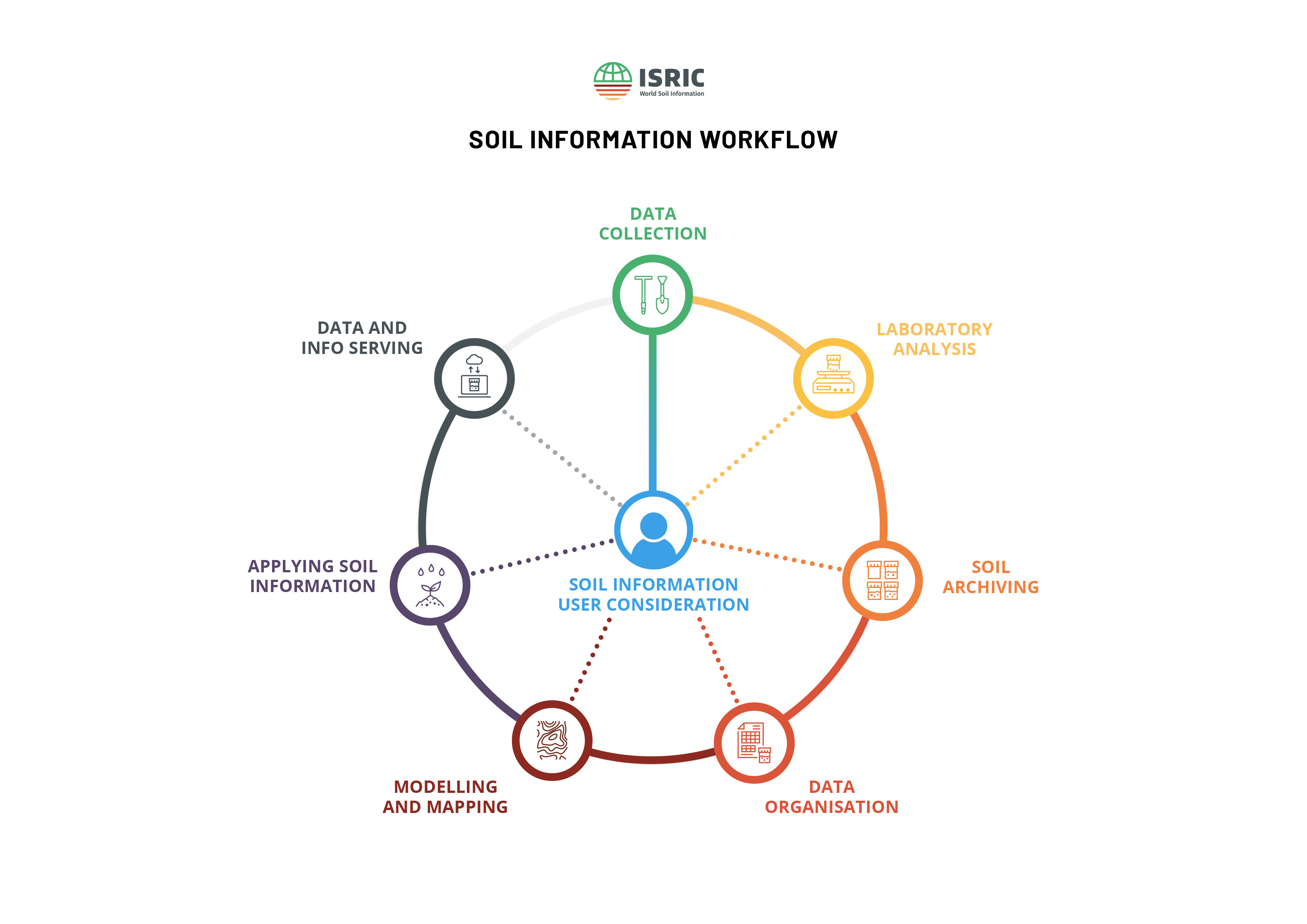Introduction
This WIKI is a collaborative effort to collect and describe hands-on good practices on data assimilation and dissemination in the Soil domain, with a focus on Europe. The INSPIRE directive has been and is an important effort for standardisation in the environmental data domain, therefore this WIKI has a lot of links to INSPIRE sources. Because INSPIRE adopts industry standards, this WIKI does reference common standards from ISO, Open Geospatial Consortium, Global Soils Partnership, IANA and W3C, giving it a global relevance.
The term data assimilation has been chosen by the autors as an alternative to the terms harmonisation and standardisation, which already have a specific meaning in the soil domain:
standardisation; aligning soil data to a common model, using common codelists.harmonisation; transforming results from observations and measurements to values as if all results for a property are measured using the same procedure, by applying so called Pedotransfer Functions (PTF).
The process of assimilation also aims to capture additional aspects, such as finding, downloading and using the data. Most of these aspects are also well described as part of the FAIR principles.
- Findable, provide relevant metadata via online portals
- Accessible, make the data available as download or API
- Interoperable, adopt common data models and code lists
- Reusable, add documentation and provide tools to reuse the data
Organisation of the articles
Toner et al, 2022 identified 6 steps in a typical soil information workflow from a data producer perspective and a separate category for the data user perspective. These steps form a relevant categorisation of the articles in this wiki. Much of the articles apply to the categories:
We’ve labeled each of the articles as to which step in the workflow they apply.

This wiki lists a series of options for publishing data according to the Technical Guidelines and/or the Good Practices dedicated to use cases from the Soil domain. For each option recipes on various technologies are provided. The practices are categorized at 3 levels:
- Minimal, based on a minimal effort
- Traditional, following initial technical guidelines
- Experimental, following recent and upcoming good practices
The practices cover 7 topics.
- Identification and namespaces
- Data harmonization
- Code lists
- Metadata and Discovery
- View services
- Download services
- Quality of service
References to products and approaches are examples. We do not aim to provide a complete listing, nor endorse a specific technology or service provider. Please consult any alternative software provider to what extent INSPIRE is supported in their products. In that scenario consider to contribute your experiences to this WIKI.
Reading guide
While reading the vast amount of recipes in this cookbook you may realize; if there are so many options, how are the differences between the implementations bridged. - Some implementation options differ in technology, but generate a similar result - Some options actually need some bridging before data can be combined, but the number of bridges is limited (and could also be bridged by intermediaries) - All options share some basic principles, such as identifier persistence and adoption of common codelists, which make any option beneficial
When selecting one of the available options, consider the following aspects:
- The minimal implementation will have limitations for end users (for example having to download the full dataset, if they are only interested in a small section). On the other hand, minimal implementations tend to be less complex in setup which makes understanding the implementation easier.
- The traditional implementations have the most active users, so dedicated documentation and tooling is available with high Technical Readiness Level (TRL). However, some technologies are based on conventions of almost 20 years ago. These conventions are outdated, compared to current IT practices.
- An experimental approach brings the risk of incomplete documentation and tools. Also there is less evidence on usability. But it does give opportunity to use current technologies and engage with the community to design the next iteration of data sharing.
Before selecting an option evaluate the following aspects in your organization.
- What are current IT tools and conventions used in the organization to understand which of the approaches fits best with the current knowledge and experience
- Combine an implementation of INSPIRE with business cases that generate direct benefit for your organization or partners. For example, adoption of the open data directive, better documentation and reporting of service levels, improved archival of data, discoverability on search engines.
- Assess the projected audience. Verify that the complexity and nature of the implementation matches with the expectations and capabilities of that audience.
We recommend to start with a minimal implementation and validate it with the provided compliance test tooling. From there, extend the implementation while continuing the tests with each iteration. With such an you are able to focus on the important aspects and prevent caveats early on in the process.